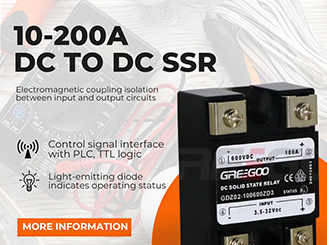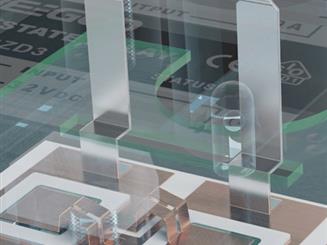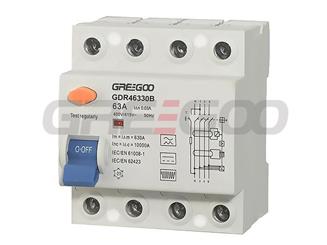Solid State Relay: A Comparison of PLC Interface and Panel Mount
The main difference between a PLC interface solid state relay and a panel mount solid state relay lies in their mounting methods and application scenarios:
-
PLC Interface Solid State Relay:
- Mounting Method: Typically designed to be mounted directly on a DIN rail, making it easy to integrate with PLC systems.
- Application Scenario: Mainly used in industrial automation systems in conjunction with PLCs (Programmable Logic Controllers), suitable for situations requiring quick response and high-frequency switching.
- Features: Compact size, easy to integrate, usually has a modular design for easy replacement and maintenance.
-
Panel Mount Solid State Relay:
- Mounting Method: Designed to be mounted directly on a device panel, usually requiring screw fixation.
- Application Scenario: Suitable for applications that require direct mounting on control panels or device enclosures, commonly used in power control and distribution systems.
- Features: Typically has higher current and voltage handling capabilities, suitable for larger power loads.
These two types of solid state relays may have similar functions, but due to differences in mounting methods and application scenarios, they have their own advantages in design and use.
 |
 |
| 6.4mm width ultra slim solid state relay module 1/2/3A | 12.8mm width ultra slim solid state relay module 3/4/5A |

𝑫𝒖𝒂𝒍 𝑻𝒉𝒚𝒓𝒊𝒔𝒕𝒐𝒓 𝑴𝒐𝒅𝒖𝒍𝒆 - 𝑻𝒉𝒚𝒓𝒊𝒔𝒕𝒐𝒓-𝑻𝒉𝒚𝒓𝒊𝒔𝒕𝒐𝒓 𝑴𝒐𝒅𝒖𝒍𝒆 - 𝑷𝒉𝒂𝒔𝒆 𝑪𝒐𝒏𝒕𝒓𝒐𝒍 𝑻𝒉𝒚𝒓𝒊𝒔𝒕𝒐𝒓 𝑴𝒐𝒅𝒖𝒍𝒆 - 𝑺𝑪𝑹 𝑴𝒐𝒅𝒖𝒍𝒆 - 𝑺𝒊𝒏𝒈𝒍𝒆 𝑻𝒉𝒚𝒓𝒊𝒔𝒕𝒐𝒓 𝑴𝒐𝒅𝒖𝒍𝒆
𝑫𝒖𝒂𝒍 𝑻𝒉𝒚𝒓𝒊𝒔𝒕𝒐𝒓 𝑴𝒐𝒅𝒖𝒍𝒆 - 𝑻𝒉𝒚𝒓𝒊𝒔𝒕𝒐𝒓-𝑻𝒉𝒚𝒓𝒊𝒔𝒕𝒐𝒓 𝑴𝒐𝒅𝒖𝒍𝒆 - 𝑷𝒉𝒂𝒔𝒆 𝑪𝒐𝒏𝒕𝒓𝒐𝒍 𝑻𝒉𝒚𝒓𝒊𝒔𝒕𝒐𝒓 𝑴𝒐𝒅𝒖𝒍𝒆 - 𝑺𝑪𝑹 𝑴𝒐𝒅𝒖𝒍𝒆 - 𝑺𝒊𝒏𝒈𝒍𝒆 𝑻𝒉𝒚𝒓𝒊𝒔𝒕𝒐𝒓 𝑴𝒐𝒅𝒖𝒍𝒆
Read More
10A to 180A DC to DC Solid State Relay
10A to 180A DC to DC Solid State Relay, 60V, 100V, 200V, 600V, 1200VDC.
Read More
Solid state relays
Greegoo's SSR, solid state relays, structure, appearance, types and features. Single phase, ac switching and dc switching, panel mount and solid state modules, 10A to 400A.
Read More
Protection for EV charging, B type earth leakage protection, EV charging RCCB
The B type residual current circuit breakers provide protection in the event of a continuous fault current on three-phase networks generated by controllers and variable speed drives;battery chargers and inverters; backed-up power supplies.
Read More














